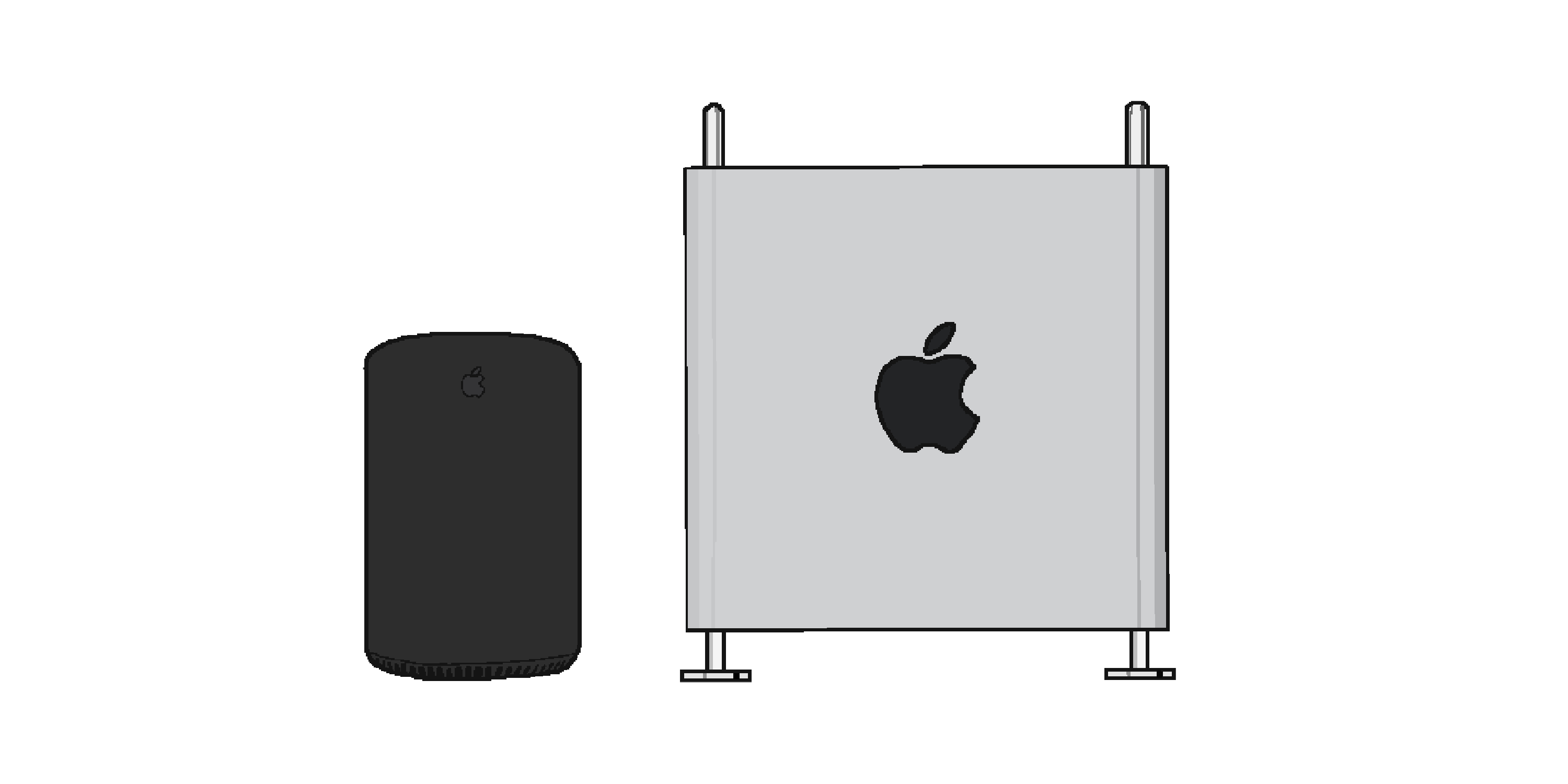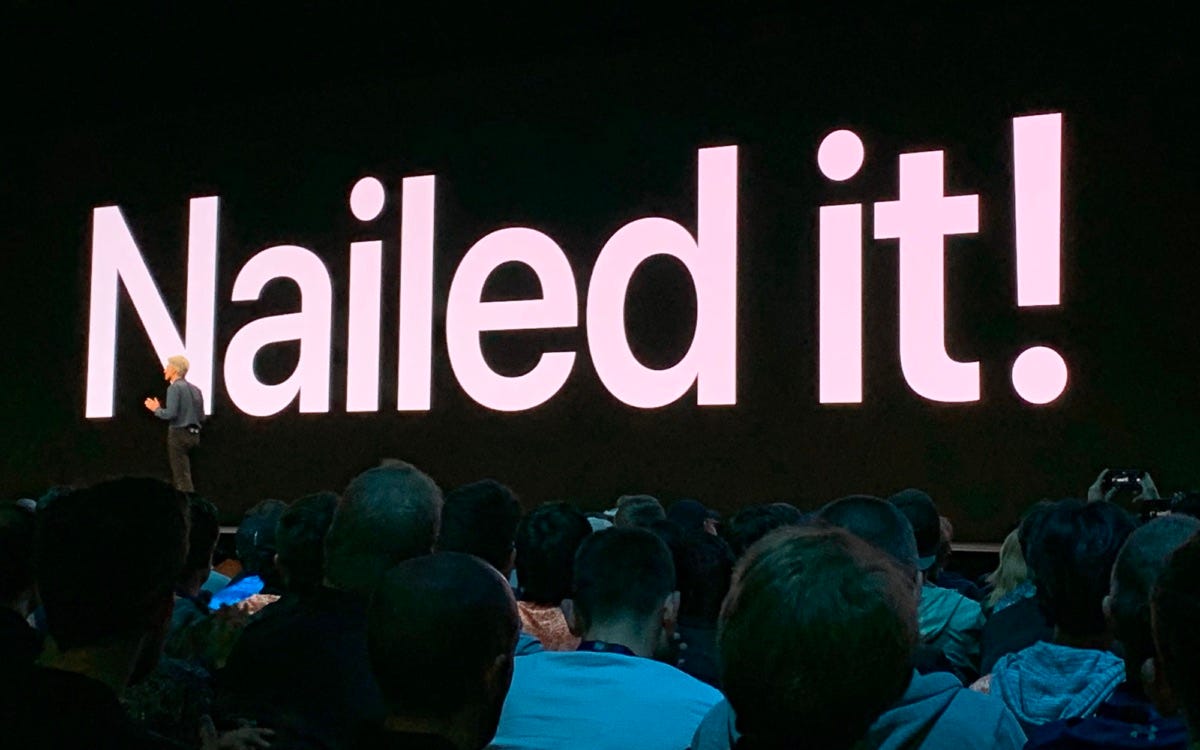Product Market Fit of the Mac Pro
The difference between the trash-can Mac Pro and the recently announced 2019 Mac Pro in terms of product/market fit is a classic exercise in the lean canvas.

Apple admitted in 2017 that its 2013 Mac trash-can design was a mistake, and executives indicated that Apple intended to support its professional users in the future better.
Mistakes such as assuming multiple linked GPUs were the future, and reduced thermal throttling could be forgivable. But an unfriendly form factor making upgrades difficult and a strong bet on external hardware connections strongly alienated the pro-market even though it has been reported not many users actually upgrade their machines. Perhaps the knowledge that you can satisfy a significant pain point.
Let’s dive into this device and its consumer audience to see how Apple this time has hit a home run.
Lean Canvas Takedown
The Problem
- Being productive while performing industry-leading tasks
- Using Mac software for high-end production work
- Customise hardware to complete specific tasks
The main problem a fabulous computer helps with is saving time. Resource intensive uses from graphics rendering, video production and game development to data processing and machine learning sometimes require a powerful solution. People who perform these tasks need a machine which can speed up workflows, increase productivity and give its users the flexibility to experiment without a time penalty.
These users could use a PC but may have a preference or requirement to use software built for the Macintosh operating system.
Finally is the problem of being adaptable with changing requirements and trends. For example, let’s say you need to train a new type of neural network and a fantastic piece of specialised hardware has come out making the task easy. It should be as simple as installing that hardware into your machine to get the job done.
Customer Segments
- High-end media production creators or studios (Creative professionals)
- Graphics, design, audio, video, game development, VR, machine learning, data processing work, app development
- Server farms
The Mac Pro is not aimed at your typical Apple consumer. This product is designed for companies and individuals involved in high end, creative production industries who are willing to spend premium amounts for premium performance.
A growing market segment is likely to include increasingly power-hungry users like data scientists and developers looking to speed up code builds and automating tests.
An attractive new segment could include companies looking to Mac hardware for B2B solutions. Examples of this include MacStadium, a Mac cloud service or Imgix who are known for using racked trash-can Mac Pros for their on-demand image processing. We could start seeing more cloud-hosted Mac solutions doing everything from hosting websites to machine learning.
The Market
- PC
- Other Macs
- Hackintosh
- Cloud services
Probably the biggest competitor to the Mac Pro is going to be other Macs. Either the consumer is going to compromise and decide to buy a Mac at a specific price point, or invest that money into building a PC or Hackintosh equivalent.
Something to note is with the rise of cloud services like AWS and the potential of running virtual Macs on a server, the need for powerful hardware on a primary device may become less relevant over time. We may simply outsource the heavy lifting of a project to a third party service and use something like an iPad as an input or viewing device.
Solution
- Modular hardware system
- Easily upgradeable and modifiable
- Compatible with macOS
- Can support industry-leading hardware running under heavy loads
The answer to the problems listed based on performance and modularity are as bright as the Mac Pro spec sheet. It has been a long time since we have seen something from Apple, where they have taken the needs of the professional creative into consideration. The Mac Pro is a powerful system with massive potential for hardware expansion, is upgradable and importantly runs MacOS. This should be a machine which gets stuff done.
“The reality is that each of these machines will last years, allowing monitor upgrades, storage upgrades and expansion that a mini or iMac just wouldn’t permit,” says Sbiral (professional photographer)
Unfair Advantage
- Powerful proprietary hardware
- Branding
- Mac OS compatibility
- Price
- Industry-leading software support and compatibility
- Details
The biggest unfair advantage Apple has here is native support for macOS and access to the software suite it provides. Arguably you can find alternative software, but creatives may have been trained on Macs and software vendors like Adobe invest in ensuring they get the most performance out of standardised Mac hardware.
Details like ensuring there is sufficient expansion/power for future-proofing customer needs, a secure and easy mechanism to get inside the system and handles and wheels to increase probability show how solving the user problem can take different forms at different levels. All this adds to the appeal and unfair advantage of the product over a standard workstation.
We should also not underestimate the power of Apple branding. Apple has a long history of building hardware for creatives and has used this to create an aspirational brand. Seen a cool website, photo, video or app recently? Chances are the creator used a Mac. Even if it doesn’t make you more creative, Apple’s customers are buying into that aspirational creative lifestyle.
Business Costs
- Manufacturing
- Logistics
- Research and development
- Marketing
- Sales
With Apple’s logistics system, I would be surprised to hear they are spending much on manufacture, warehousing. Most of the costs I feel will be in the research and development of the product, as well as marketing.
Estimates state that a base Mac Pro in terms of costs is around 5,999. We don’t have precise details on the value of creating a Mac Pro, but I wouldn’t be surprised to learn Apple is taking a generous margin. You can see a rough breakdown of the component costs here.
Final Thoughts
From Adrian
Apple talked to many industry professionals during the process of designing the new machine, and the results are starting to show. Initial responses from target consumers are overwhelmingly positive, and my youtube feed/podcasts seem to be flooding with excitement over the device.
Most professionals are not likely to be buying the Mac Pro base model, and usually, have budgets within the 20,000 range. When your hardware if your lifeline, it seems consumers are happy to pay a premium.
In Craig Federighi’s words during WWDC, “Nailed it!”.
